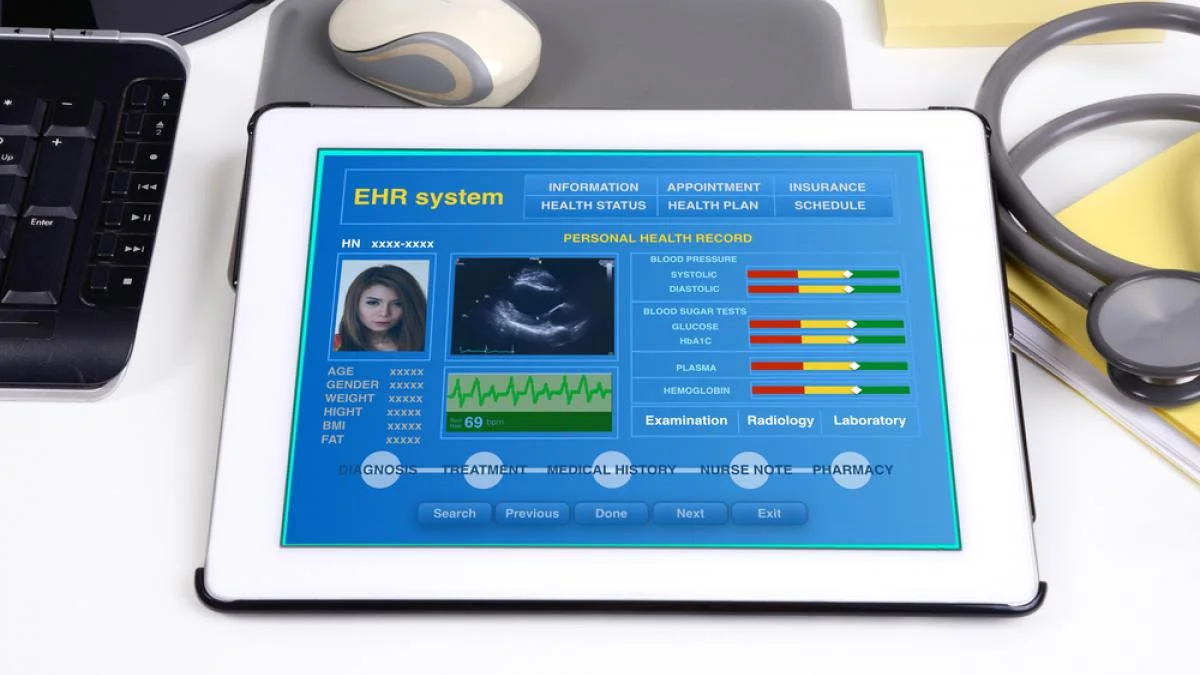Customizing Electronic Health Record (EHR) Systems with Python
Modern healthcare relies on EHR systems to coordinate patient care across hospitals. EHR systems must be adapted to meet organizational requirements as healthcare demands change. Python is becoming more popular for customisation due to its simple syntax and powerful features. Python may enhance EHR systems in healthcare businesses, making them more efficient and customized.

The Importance of Customization in EHR Systems
Out-of-the-box EHR systems provide substantial functionality, yet often require customization to enhance workflow efficiency and comply with particular regulatory standards. A 2020 American Medical Association (AMA) survey indicates that 85% of healthcare providers believe customization significantly boosts both system efficiency and user satisfaction. These customizations can vary from simple interface adjustments to complex data integrations and analytics capabilities.
Django Stars, a monostack company specializing in Python, maximizes this potential by setting high standards for their Python developers and continuously investing in their growth. “Our commitment to excellence is demonstrated through the consistent development of our teams, which are tailored to meet the unique needs of each project,” explains Roman Gaponov, CEO of Django Stars. Whether you’re looking to enhance EHR systems or initiate new healthcare solutions, Django Stars can assemble teams of varying sizes and expertise to bring your vision to life. Explore how their Python expertise can benefit your projects today.
Choosing Python for EHR Customization
Python is ideally suited for EHR system customization due to several key factors:
- Ease of use and readability: Python’s straightforward syntax ensures that maintenance and updates are manageable for development teams.

- Comprehensive libraries and frameworks: Python’s ecosystem includes libraries such as Pandas for data manipulation, Dash for building analytical web applications, and NumPy for heavy numerical operations.
- Extensive community support: Python’s large community provides a reservoir of shared knowledge and troubleshooting support, aiding developers in overcoming complex challenges in EHR customization.
Primary Customization Opportunities Using Python
Data Management and Analytics
- Python’s automated ETL methods simplify patient data management.
- Matplotlib and Seaborn help clinicians analyze patterns and patient outcomes by visualizing EHR data.
Enhanced Clinical Decision Support
- Integrating Python scripts with EHR systems can provide clinicians with real-time analytics, predictive insights, and personalized treatment recommendations.
- Predictive models developed with Python can forecast patient risks, with potential to lower readmission rates by up to 10%, as per findings by the Healthcare Information and Management Systems Society (HIMSS).
Interface Customization and Workflow Improvements
- Python can customize user interfaces for departmental procedures, improving efficiency and satisfaction.
- A 2019 research found that Python can cut manual administrative work by 30%.
Implementing Python Customizations in EHR Systems
Needs Assessment and Scope Definition
- Evaluate current system functionalities and collect feedback from end-users to pinpoint necessary enhancements.
- Clearly outline project goals, desired outcomes, and metrics for success.
Development Environment Setup
- Create a secure, isolated development environment that replicates the live EHR setup to prevent disruptions during the customization process.
- Implement version control with tools like Git to manage code changes efficiently.
Customization Development and Testing
- Develop Python scripts or applications to meet specific customization needs.
- Thoroughly test all customizations in the controlled environment to ensure they meet functionality, security, and compliance standards.
Deployment and Ongoing Monitoring
- Implement customizations incrementally in the live environment, closely monitoring their impact and gathering user feedback.
- Continuously refine customizations based on user feedback and evolving needs.

Key Challenges and Strategic Considerations
- Regulatory Compliance and Security: Always ensure that Python-enhanced EHR customizations adhere to legal standards such as HIPAA.
- Maintenance Needs: Customized systems require ongoing maintenance to align with new software updates and address emerging issues.
- Staff Training: Comprehensive training is essential to fully leverage the enhancements made to the EHR system. Customizations should be user-centric and well-documented.
Expanding Python’s Role in Future Healthcare Innovations
As healthcare technology progresses, the role of Python could expand beyond EHR systems into other areas of health informatics and patient management. For smaller practices, the best EHR for small practice can leverage such advancements to improve efficiency and care delivery.
For instance, Python’s capabilities can extend to managing real-time data feeds from wearable technology, providing dynamic updates to patient health records and alert systems. This integration can facilitate more proactive approaches to patient care and disease management.
Integrating Machine Learning for Predictive Health Analytics
Leveraging Python for machine learning offers tremendous potential in predictive health analytics. By analyzing vast arrays of historical patient data, Python-based machine learning models can identify patterns and predict health outcomes, thus allowing for preventive measures to be taken before conditions worsen or even manifest. This proactive approach could significantly alter the landscape of patient care, emphasizing prevention over treatment.
Summary
Python allows healthcare firms to tailor EHR systems to match their requirements. With strategic planning and execution, these improvements may improve healthcare delivery and patient outcomes. Python’s role in constructing adaptive, efficient EHR systems will shape healthcare digitalization as technology evolves.
FAQs on Customizing EHR Systems with Python
Q1: What makes Python a preferred language for EHR customization?
A1: Python is favored due to its simplicity, readability, and the rich ecosystem of libraries and frameworks that support data manipulation, web application development, and complex analytics, making it suitable for integrating with and enhancing EHR systems.
Q2: Can Python be used to improve data security in EHR systems?
A2: Yes, Python supports various security measures and can be used to implement encryption and data protection mechanisms to ensure that EHR systems comply with regulations like HIPAA and protect sensitive patient information.
Q3: How does Python aid in clinical decision support?
A3: Python can be employed to develop advanced predictive models and real-time analytics tools that integrate with EHR systems to provide clinicians with actionable insights, enhancing patient care and optimizing treatment plans.
Q4: What are some challenges faced in the customization of EHR systems using Python?
A4: Challenges include ensuring compliance with healthcare regulations, maintaining the customizations with ongoing system updates, and the need for continuous training for healthcare staff to adapt to new tools and features.
Q5: How can healthcare organizations get started with customizing their EHR systems using Python?
A5: Organizations should begin by assessing their specific needs and defining the scope of enhancements. Setting up a secure development environment and using version control is crucial for effective customization. Engaging with a knowledgeable development team skilled in Python and familiar with healthcare applications is also recommended.



